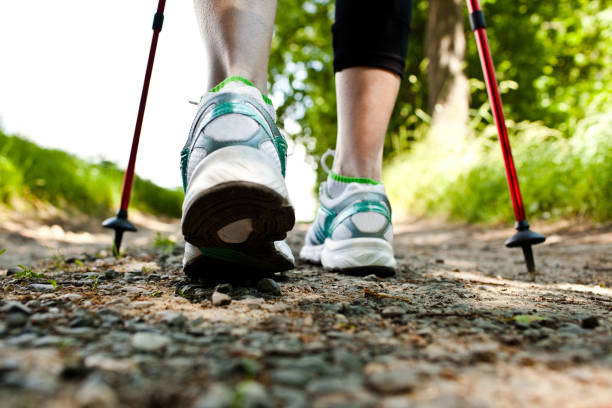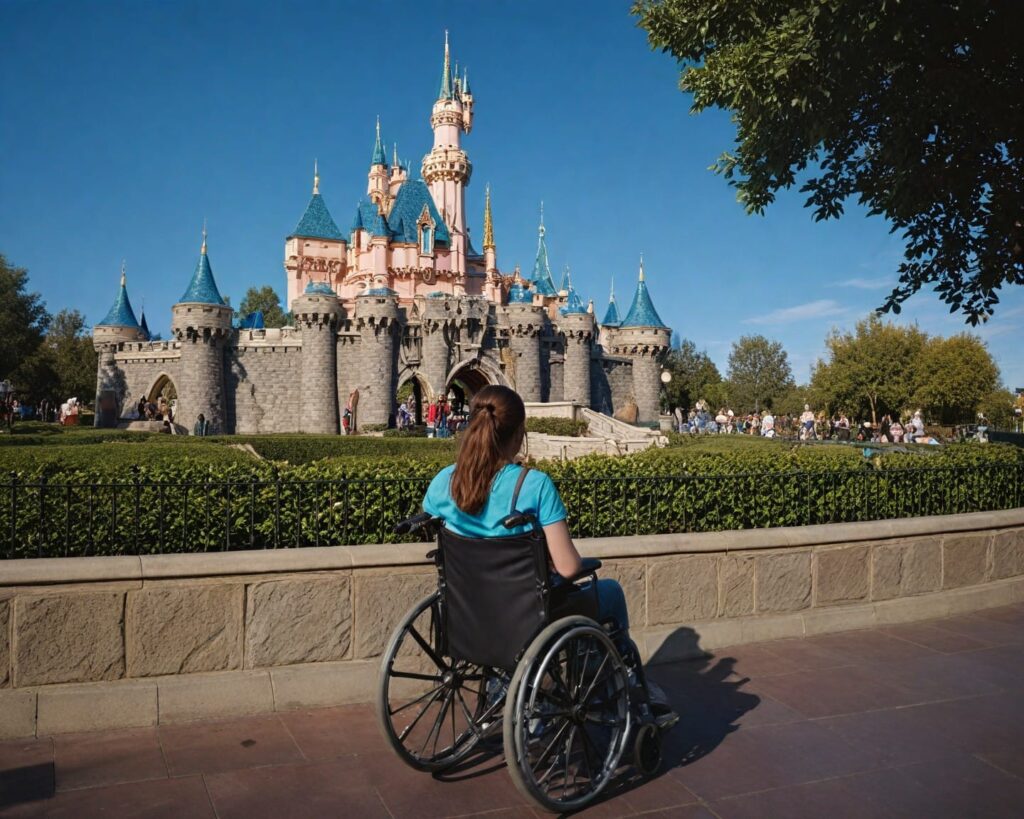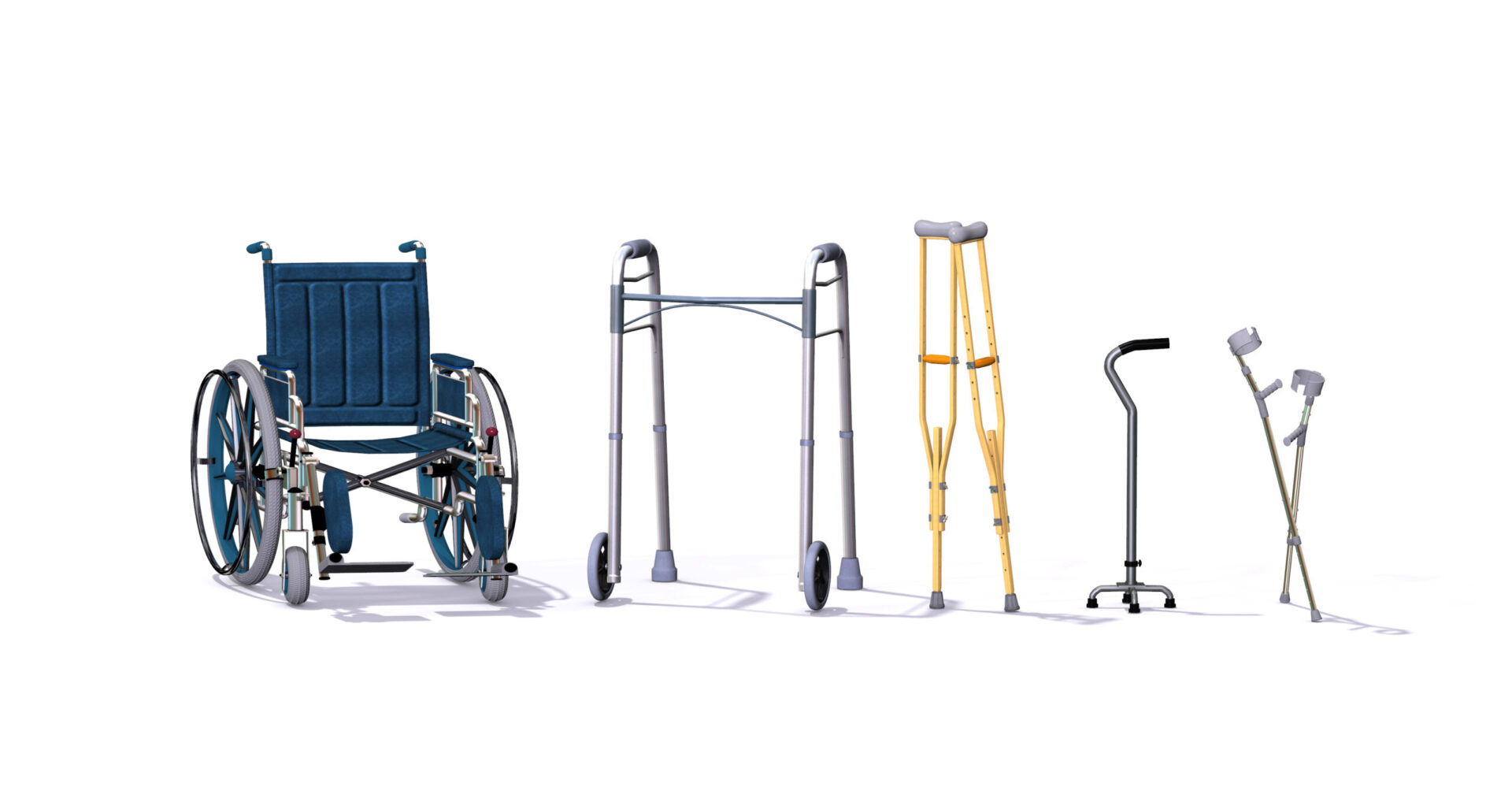Feeling off-balance is a very common side effect of living with a vestibular disorder. Many people feel like they have to become immobile for fear of falling down. While in the depths of challenging symptoms, you can always use assistive devices to help with your balance. This will help you maintain mobility while getting some help to feel safe.
While some people may avoid using these assistive devices, it is not something that should be avoided out of vanity. If they help you, they help you, and can always be temporary. They can keep you safe from falling over which is a possibility when living with a vestibular disorder. Anything that helps your balance is a win!
Walking Poles:
You may have seen people using walking poles while out hiking. You don’t need to hit the trails to use these to help you! Walking poles are helpful for people who don’t need as much assistive support but just want to get the additional stability they need. They are lightweight and easy to carry and can be used for going around the neighborhood or up a mountain!
Walking Sticks:
Walking sticks are similar to walking poles but provide a little extra support. They can help you sense different terrain so you know what to expect with each step. They are slightly heavier than walking poles, but are a great option for people who don’t need as much support, but want the additional safety. Both options help you stay upright with natural posture and steps.

Canes:
Canes are an option for people that may feel like they need more support on one side, or want to have one supportive device versus two. There are three different types of canes:
Standard- These have a curve or T shape and don’t bear a lot of weight.
Offset- This cane is designed to bear more weight that shifts the weight from the wrist to the forearm. While this is a good option for more weight bearing, people with vestibular disorders might find it to be disorienting with the weight shift.
Multiple-legged cane- This has a larger, sturdier base and offers more stability than other canes. It is more cumbersome, however, and will likely slow down your walking pace.
Crutches:
Crutches bear more weight and take off the pressure from your lower body. Crutches can be difficult to use and need to be fitted to your body. It is not usually recommended for dizzy people to use crutches without an injury, because they can cause tightness in the neck and shoulders which might make dizziness worse.
Walkers:
Walkers offer the most support as an upright assistive device. They are extremely stable and steady. However, they can change the way you walk in an unideal way. They slow your walking down and might cause pressure on the neck and shoulders while being in a hunched over position. These are very helpful however, offering a seat when needed and giving the most feeling of support. Be sure to get one fitted to your size if that’s what you decide to do.
Wheelchair:
A wheelchair will provide you with the most support in all the assistive devices. Many people like to use them in the grocery store or any busy places with a lot of walking like theme parks, outdoor events, etc. However, if you are using a wheelchair strictly because of dizziness, you might become dependent on it and not improve your balance and mobility. Practicing walking, even if using an assistive device, is essential to improving balance!
Using assistive devices can offer the support you need to remain mobile and help with your balance. Before deciding on one, be sure it is fitted to your size. We want to improve our balance and remain mobile, so MAKE SURE to also incorporate strength training, balance exercises, and anything else to make these devices a temporary solution. You can return to walking, running, hiking, and everything else with the support of VGF!







